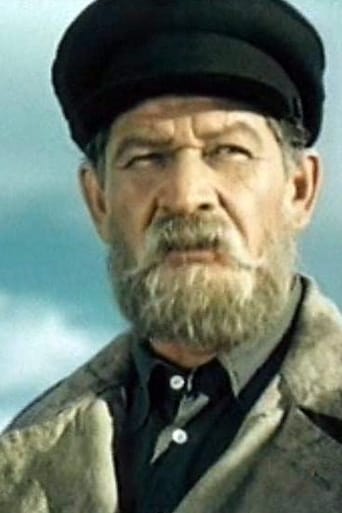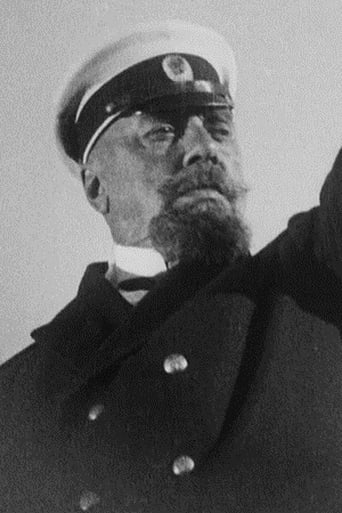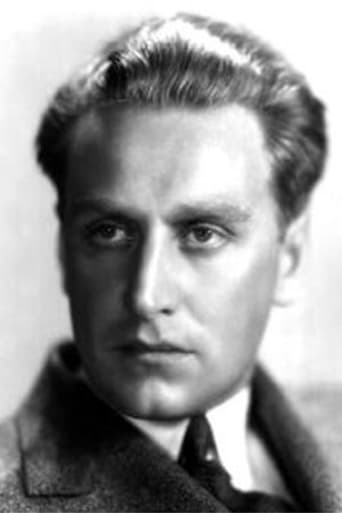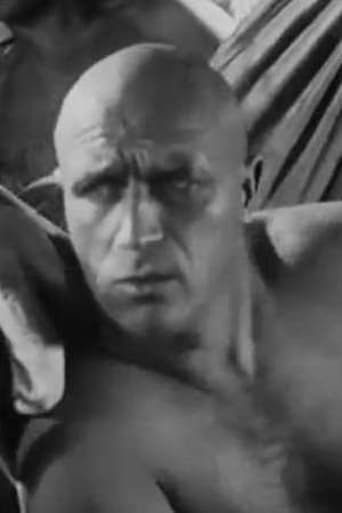Numerootno
A story that's too fascinating to pass by...
Bluebell Alcock
Ok... Let's be honest. It cannot be the best movie but is quite enjoyable. The movie has the potential to develop a great plot for future movies
ElMaruecan82
Why is it that so many cinematic landmarks happen to be propaganda? I guess there was a perfect timing with the birth of a new art / medium coinciding with a new century, allowing the early cinematic masterpieces to be studied in film-making schools while not losing any relevance in history classes. If in its silent first steps, cinema was the latest 'hip' thing, a funny wonder from two French siblings or a mild bourgeois amusement, as technology advanced and authoritarian regimes were looking for the most effective ways to capture the spirit of the masses and then, cinema became a political weapon.It's all about masses when you think about it, propaganda movies confront us to the real bargain of cinema; different people sitting altogether in the dark, anonymously and eyes converging toward the same images. We're individuals but we form an audience, a collectivity meant to react. The director shouts "Action!", for us, it's the reaction.And this is not a hazard either if most propaganda movies worked during the Silent Era where it was all about the power of images, dialogs rather than faces. In "Battleship Potemkin", the most iconic image involves a woman with a broken eyeglass and bleeding eye, Bunuel had the eye sliced but the point is all the same for Eisenstein, the eye is more sensitive than the brain and Eisenstein definitely knew how to catch it.His "Battleship Potemkin" chronicles the injustices underwent by the Potemkin crew, the resulting mutiny and martyrdom, then the solidarity displayed from the people of Odessa and the iconic confrontation with the Tsarist army during the iconic 'steps massacre' and finally another battle leading to the triumph of the Potemkin whose cause has been embraced by the other rebellious ships. Constructed in different chapters, "Potemkin" bears some resemblance with the seminal "Birth of a Nation" but the technique of Griffith was far more elaborated in "Intolerance", a film he studied to get his inspiration. But while watching "Potemkin", I was fascinated by the way Eisenstein almost never uses narration in his cardboards, they all feature cries and dialogues but they never verbalize.No need to, this is a film that trusts its material. If it was a Griffith' movie, we'd have a group of sailors coming to the office and complaining about the food. Eisenstein provides disgusting glimpses on the maggots crawling over the meat and close-up on an evil officer twirling his mustache while ordering for the borsch to be prepared (with the rotten meat). Close-ups are integral to the power of the film, because it's only when you grasp the feeling of one person that you can extrapolate it to the masses. Eisenstein understood that we all have a Pavlov reaction, believing that what goes through one person, goes through the other. This is why you can see close-ups on clenching fists, anger sights or before the massacre, of people smiling and waving to amplify the shocking suddenness of the Russian army intervention.This method also served Eisenstein for shooting of the climax, feeling that there was a lack of energy from the extras, he called one of them by his name, the others thought there was some sort of magic eye staring at them. In reality, Eisenstein picked a random name and had the right effect. That's exactly how the movie works, it finds the perfect balances between crowd shot and individual shots. That's the "Stakhanovite" move, and while the massacre feel like a giant wave of people flooding down the stairs, there are individuals we still remember.Who can forget the woman who just witnessed the death of a child and carry him to the top, going at the exact opposite of the runners, that moment alone while giving a focus on that death enlightens all the other deaths. This isn't just stylish filmmaking, this is a humanity standing and questioning the use of violence. That's something that works out of context and that's the power of "Potemkin", whether the unforgettable baby carriage, the killed mother and the broken glasses eye, at the very moment where it happens, we don't think of the Tsar, we think of War.So the argument that the massacre never happened doesn't hold up, Eisenstein wanted to shot the opposite of truth in the realm of plausibility, and that's why the sequence is powerful regardless of the context, it represents something that can happen anywhere and anytime, and for real. While seeing the woman carrying the child, I start thinking of the Vietnamese girl burnt by the Napalm and running scared and naked on the picture, I thought of that Palestinian boy who died in a shootout while his father was begging the soldiers to cease fire. "Potemkin" uses a sort of universal language that transcend the barriers of time and countries, many propaganda movies couldn't work on a universal level because they're too specific. When Goebbels saw Eisenstein's masterpiece, he knew the Third Reich needed a similar movie and on that level, "The Triumph of the Will" also became a landmark on its own, but being a masterpiece of propaganda doesn't make it a masterpiece in its own right. "Potemkin" can get away with it because the film never let speeches undermine the message, it trusts the images and more than anything, it trusts the editing.Eisenstein needed a movie to celebrate the revolution of 1905, he initially planned to make an epic project based on many historical chapters but weather convinced him (once again) to have a specific focus, one central piece: from the Potemkin, the spirit of the revolution would be magnified. See, it's all about imploding from within, one image that speaks a thousand words, for a million persons.The steps massacre became a staple of filmmaking, countlessly replayed in movies for thrills or laughs, elevating it into one of the greatest movies ever, the merit goes to Eisenstein who was so creative and daring that he didn't just made a film about revolution, but he made a revolution!
framptonhollis
All true cinephiles know about "Potemkin" and how it revolutionized cinematic techniques in editing. We all know about that insane, constantly referenced/parodied Odessa steps sequence, but do we really know WHY "Potemkin" is a GREAT movie? Not just an influential or famous movie, but an actually GREAT movie?Well, in my opinion, the reason that "Potemkin" is so great is its ability to manipulate emotions and have relentless emotional energy and thrills. In its slim 70 minute runtime, more emotional intensity has struck the audience than in most 2 hour action thrillers. This film may be communist propaganda, but its also damn good communist propaganda. I may not agree with the film's political intent, but while I'm watching it I sure do! Using the power of film and visuals, Eisenstein works as a master manipulator, pulling at every string in your body, a surging sea of pain and sorrow exploding across his forever influential screen. Who could ever forget those haunting images? The child being trampled on! The baby carriage falling! The old woman with her shot out! Blood everywhere! Tons of extras falling down these mammoth stairs. Its more thrilling than any horror film you've ever seen, and its damned brilliant if you ask me!
Steve Pulaski
NOTE: This is not a conventional review; this is my required response to Sergei Eisenstein's Battleship Potemkin for my college course Intro to Film & Screen Studies...Cinema, both domestic and foreign, owes a lot to Sergei Eisenstein for creating not only one of the most successful propaganda films with Battleship Potemkin, but one of the most successful examples of montage in history. Eisenstein employs a wide variety of subversive montage styles here, some considered tonal ones that string together a continuous feeling that rubs off on an audience, some for the purpose of continuity and consistency in events, and some for the purpose of putting grandiose, large-scale sequences into a specified perspective, though all significant in their own right.One of the most jarring inclusions of structurally conflicting shots is the famous shot of the statue of the lion, which is shown sleeping, awakening, and rising all in the matter of about two seconds. These static images, when strung together, inspire the kind of momentary shock we, the audience, have upon watching Eisenstein concoct a film so raucous and battle-hungry that it's as if the lion is replicating our personal feelings whilst watching the film. The conflict established is more or less a circumstance of reactionary response to the disobedience of order; order which is constantly affirmed throughout the entire first chapter of the film.Then there's the scene in the second chapter where the passengers aboard Potemkin begin to rebel. Eisenstein utilizes his montage theory to establish the events occurring before zeroing in on specific people fighting and specific blows in a way that shows the conflict between the two parties whilst showing a more concise focus on a large-scale playing field. The effect is unique because it's rare we see a large battle (or even a large battle conducted in a small area) specified so humanly by way of close-ups and intimate shooting techniques that Eisenstein employs that make the sequence so personal.As far as alternative logic goes – where Eisenstein creates some sort of visual poetry or distinction without the use of his beloved montage technique – there's the scene early in the film where one of the captains goes to observe the actions in the bunkers. Eisenstein's camera observes the actions of the captain while interjecting cuts of pots and pans precariously placed atop boards of wood that are strung up and suspended to the room's ceiling. These scenes establish what the captain is looking at and what his environment is composed of in a manner that relates greatly to Kulesov and his own personal effect.Then there are scenes that are more concerned with fleshing out a specific event, rather than encapsulating the horror and the messiness of other events (the uprising aboard the Potemkin and the famous Odessa Steps sequence just to name a few). One scene is the final straw for the workers, of sorts, when they are persuaded to believe that rotting, maggot-ridden meat is okay for consumption, despite being viewed by everybody on board, even the cooks, as otherwise. Eisenstein keeps things grounded more-or-less in a real-time here, allowing his camera to go back and forth between the workers and the captains in a manner that doesn't shortchange or rapidly look for a way out of this event in order to interject other scenes and create a compilation of "last straws" for the workers. This scene in particular establishes the logic that Eisenstein uses can be equal parts broadly observant, as seen in his montages, or decidedly focused.In a way, I feel Battleship Potemkin was a film made for the masses to, for once, look introspectively at their situations in Russian and observe the treacherous, unfair living conditions and the willfully oppressive nature of the rich and able. Eisenstein had to combat the fact that most of the commonwealth Russian population was illiterate and unknowing of their own exploitation, which made him make a film like this that, despite being able to be dissected in numerous ways, almost demands a response of any kind. The complete and total disregard for the health and wellbeing of humans should at least warrant some response from people, and Eisenstein's images reflect the horrors of oppression without getting lost in symbolism or any kind of discernible auteurism. His montage elements only add to a film, rather than being stylistic distractions that work to muddle the themes at hand.Starring: Aleksandr Antonov, Vladimir Barksy, and Grigori Aleksandrov. Directed by: Sergei Eisenstein.
SnoopyStyle
This is based on the mutiny in 1905. Sailors on the battleship Potemkin refuse to eat soup from the rotten meat. The officers order some of men executed. When the firing squad refuse the order, the ship explode in revolution. Their story spread in the port of Odessa. The Cossacks attack the defenseless people of the city. The battleship open fire against the Tsarist forces and then sail to face the fleet. The other ships refuse to fire and join in the revolution.Most of the movie is well-made. The story is simple. It does need a protagonist to break a POV but this is very much a communist film. It's about the people and about the amazing tracking shots on the steps. It looks good even today. It's dynamic and wonderful. It probably took people at the time by surprise. It is a thoroughly modern edited sequence. It also has that baby in the carriage. Wonderful.







